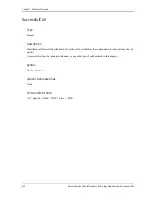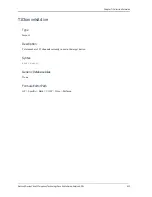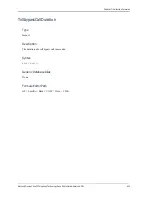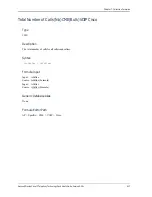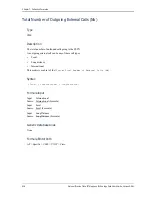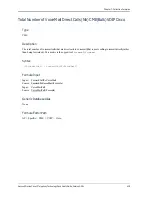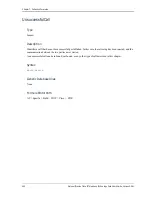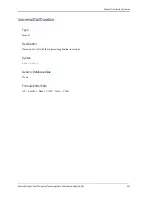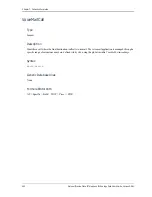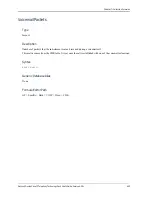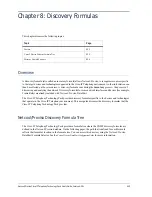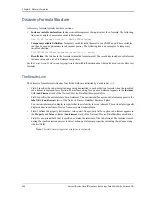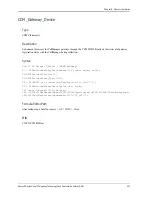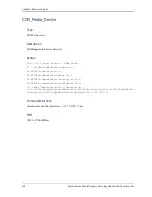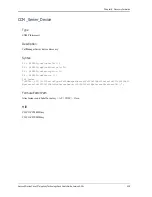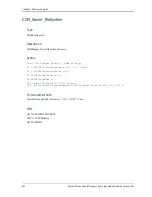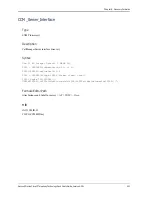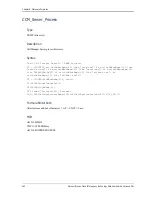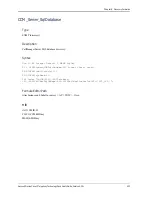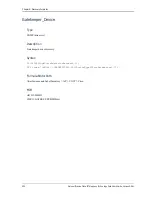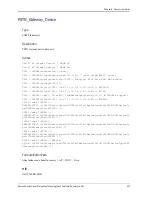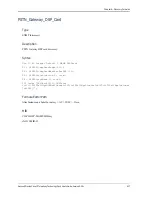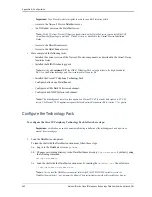
Chapter 8: Discovery Formulas
426
Netcool/Proviso Cisco IP Telephony Technology Pack User’s Guide, Version 4.3-W
Discovery Formula Structure
A discovery formula typically has three sections:
•
Instance variable declaration
. Instance variables represent the input values for a formula. The following
line is an example of an instance variable declaration:
Dim I1 AS Integer Default * NAME RTTMonIndex;
•
Temporary variable definition
. Temporary variables hold the result of an SNMP query. These variables
can then be used as parameters in subsequent queries. The following line is an example of a temporary
variable definition:
V01=OIDINST(rttMonCtrlAdminStatus.%I1==1, once);
•
Results line
. The last line in the formula returns the formula result. The results line includes a sub-element
instance string and a set of sub-element properties.
See the
Netcool/Proviso SNMP Formula Language Guide
for detailed information about the syntax used to write discovery
formulas.
The Results Line
The discovery formula results line has four fields. Fields are delimited by a double-bar (||):
•
Field 1 specifies the sub-element instance string transmitted to each collection formula when the specified
sub-element is deployed for collection. The instance string for a given sub-element appears in the
instance
field (
Sub-Element
view) of the Netcool/Proviso DataMart Resource Editor.
•
Field 2 specifies the custom label of a sub-element. The custom label for a given sub-element appears in the
label
field (
Sub-Element
view) of the Netcool/Proviso DataMart Resource Editor.
The custom label may also display in reports that show statistics for a sub-element. The custom label typically
displays under some Name, Device Name, or some similar column.
•
Field 3 defines the property list (as name/value pairs). The property list for a given sub-element appears in
the
Property
and
Value
columns (
Sub-Element
view) of the Netcool/Proviso DataMart Resource Editor.
•
Field 4 is an optional field that, if specified, contains the invariant of the sub-element. The invariant is used
during the synchronization process to detect a change of element properties, including the instance string
(the first field).
Note:
The results line must appear as a single line in the formula.

